The Condemned is a fast paced, fun card game. Never played before? Not a problem! The Condemned CCG is very easy to learn. Check out the rules below:
In order to win in The Condemned CCG, you must reduce your opponent’s Life to 0.
Condemned
- Represents you in the arena
- Cards are denoted by
in the upper left corner
- Life cannot exceed the amount printed on the card + any life bonuses applied by Weapons or Armor
- Condemned may have Sub-Types that affect the Weapons and Armor they can equip.
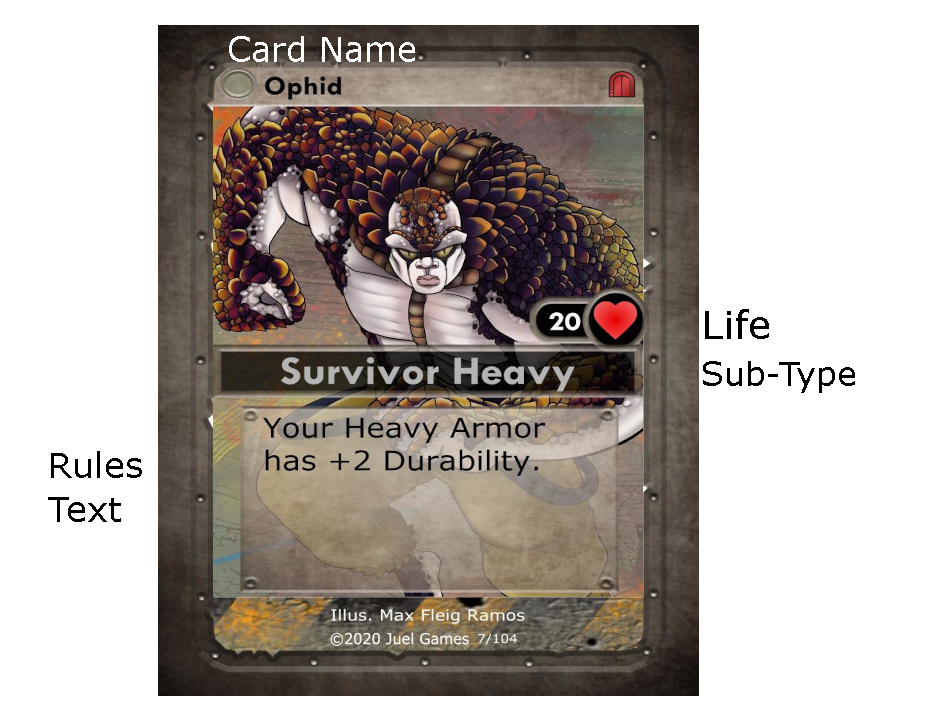
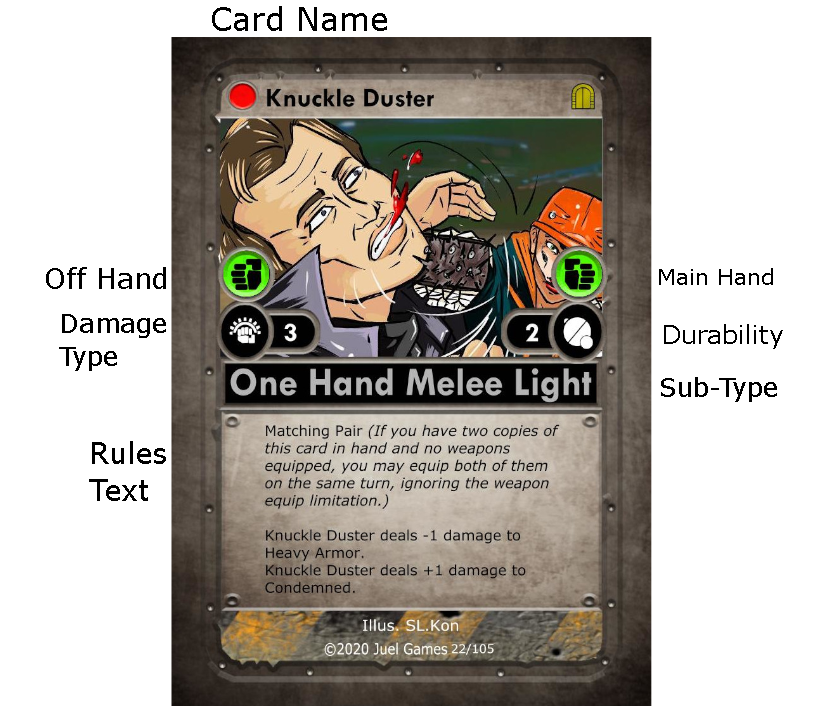
Weapons:
Weapons are the most important part of The Condemned CCG. Without them, you cannot hope to win!
- Weapons are denoted by
in the upper left corner of the card
- Damage comes in 6 types:
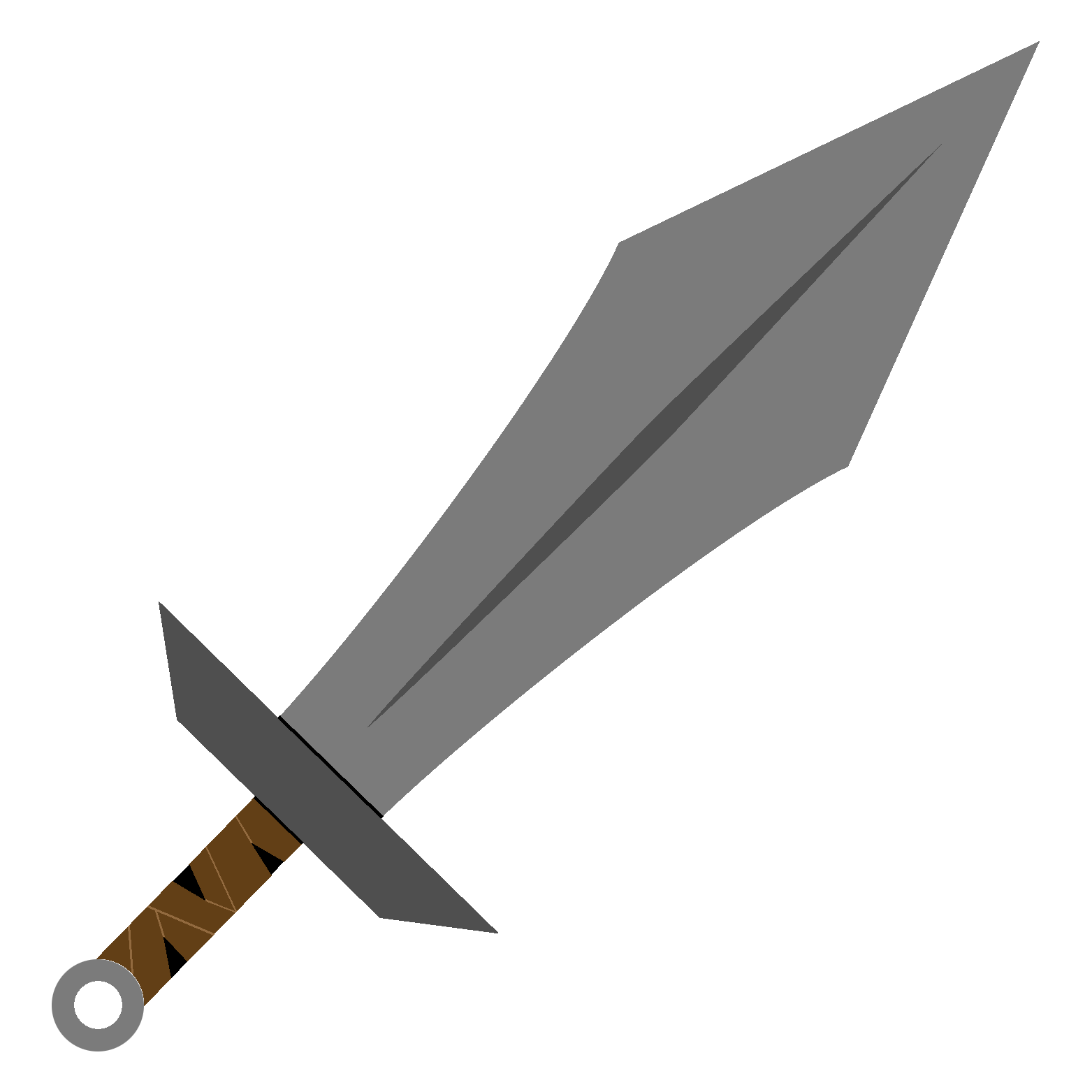 Slash: effective against Light Armor
Slash: effective against Light Armor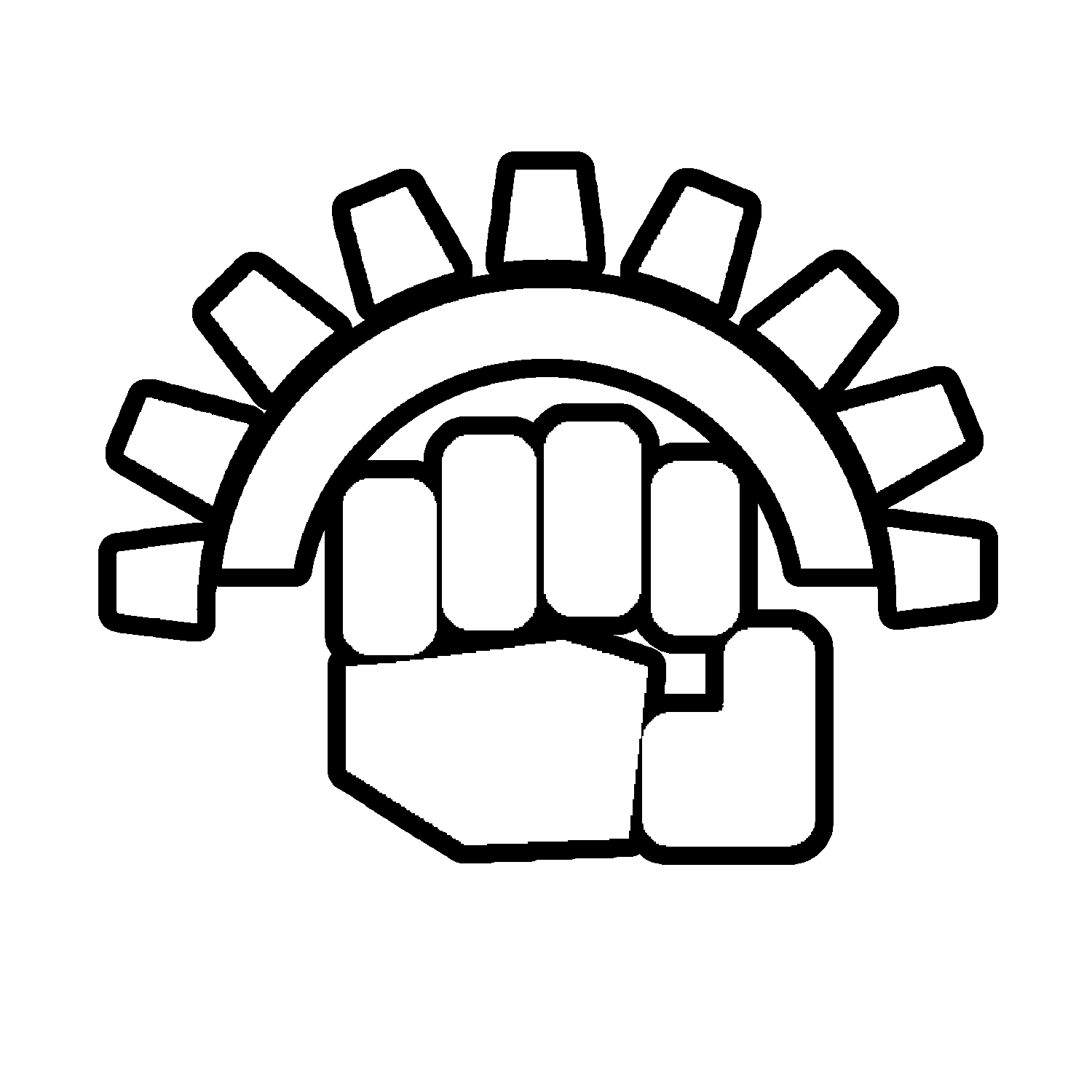 Impact: ineffective against Heavy Armor, high damage/low durability
Impact: ineffective against Heavy Armor, high damage/low durability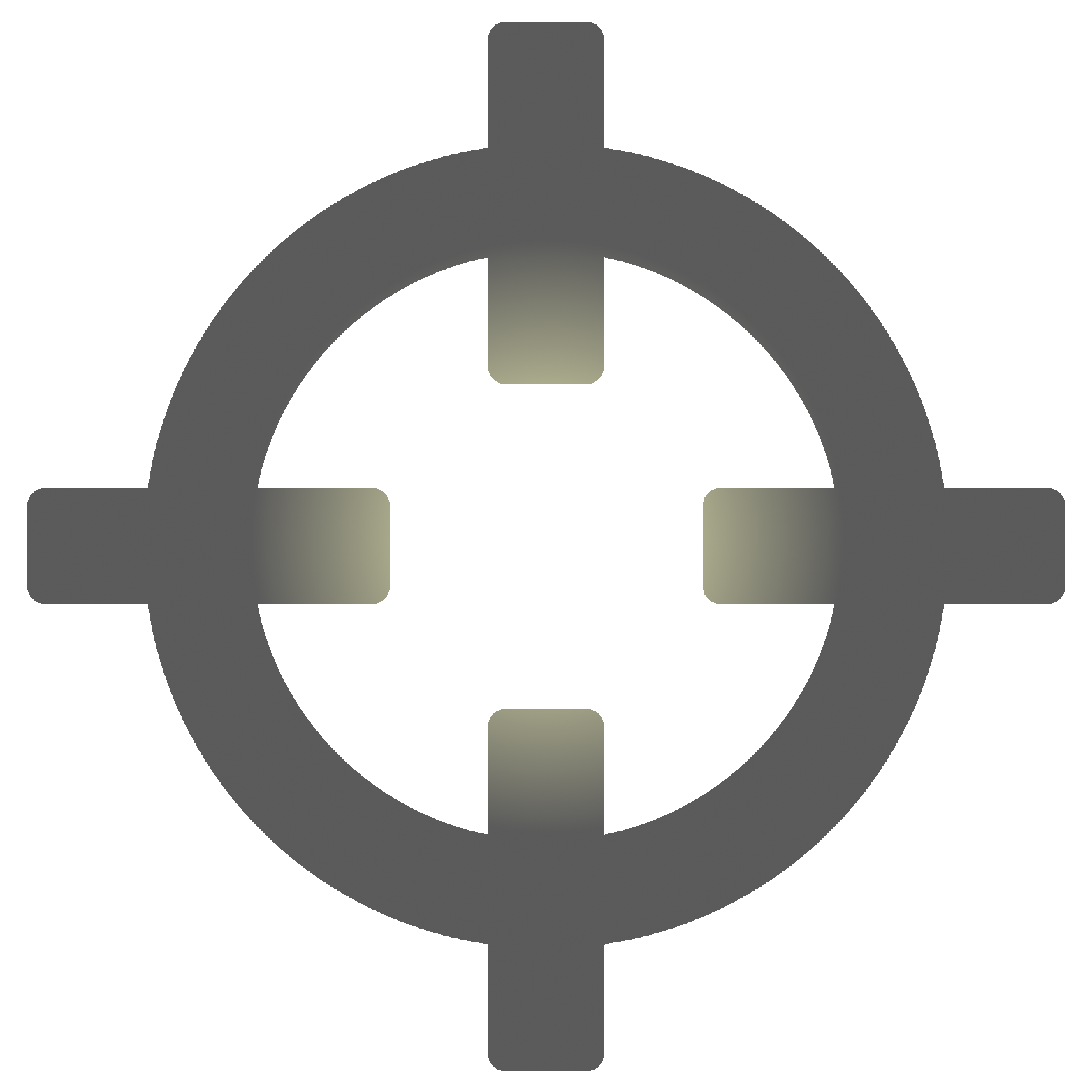 Puncture: effective against Heavy Armor, good at breaking Armor, some punch-through when breaking Armor
Puncture: effective against Heavy Armor, good at breaking Armor, some punch-through when breaking Armor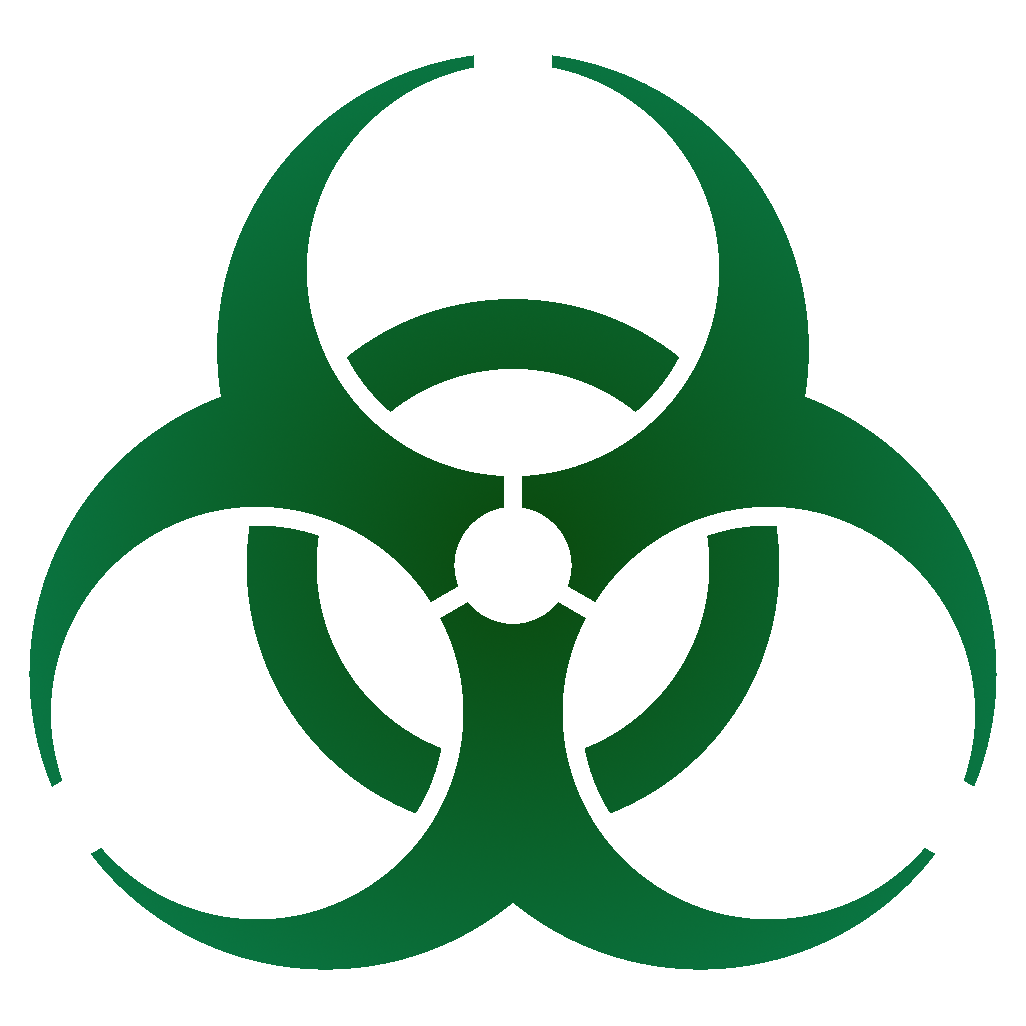 Bio: combat tricks, effective against Condemned
Bio: combat tricks, effective against Condemned Fire: effective against Armor, especially effective at doing damage to multiple pieces of Armor
Fire: effective against Armor, especially effective at doing damage to multiple pieces of Armor Electric: evasive, combat tricks, sneaky plays. The true wild card!
Electric: evasive, combat tricks, sneaky plays. The true wild card!
- Weapons will always specify One Hand or Two Hand
- Most One Hand Weapons will specify if they can only be equipped in the Main Hand or the Off Hand based on the green circles on either side of the card art
- If a One Hand Weapon shows both a Main Hand and Off Hand symbol, it can be equipped in either hand
- When a Weapon’s Durability drops to 0, it breaks and goes to the Discard Pile
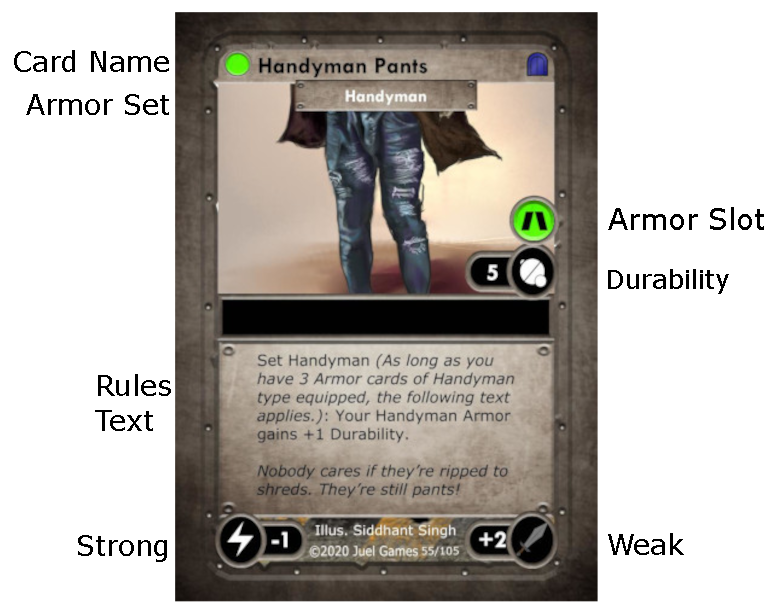
Armor:
- Armor are denoted by a
in the upper left corner of the card
- Armor fits into one of three categories:
- Head:
- Body:
- Legs:
- Head:
- All Armor have damage types they are strong against and weak against. Apply the damage modifier as written on the card
- Some cards are affiliated with a specific armor set, like this Handyman Pants. If you have Handyman Armor equipped in the Head, Body, and Legs slots, all three of them gain +1 Durability
- When an Armor’s Durability drops to 0, it breaks and goes to the Discard Pile
Events:
- Events are denoted by a
in the upper left corner of the card.
- Events can be played on either Condemned’s turn
- Only 1 Event per Condemned per turn
- When you play an Event, follow the instructions in the Rules Text
- After the Event resolves, put it in the Discard Pile
- Events resolve in a Last in-First out order
Preparations:
- Preparations are denoted by a
in the upper left corner of the card
- Any number of Preparation cards can be played, but only during the Main Phase of your turn
- When you play a Preparation, follow the instructions in the Rules Text
- After the Preparation resolves, put it in the Discard Pile
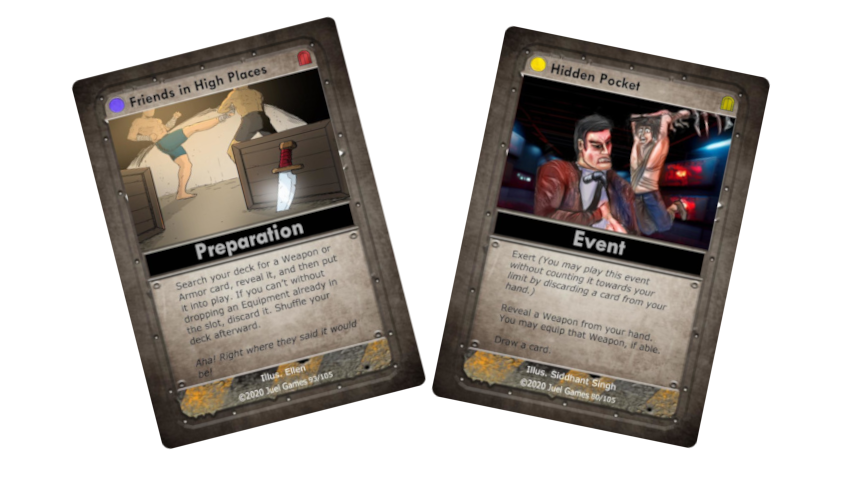
The Play Area

- The Play Area has specific slots for your cards. Your Condemned fits in the middle of the top row, with Main Hand and Off Hand Weapons on either side. Your Armor slots into the bottom row, with slots for Head, Body, and Legs Armor.
- Only one card can be present in any given field. If you don’t want to use a piece of equipment anymore, you may drop it (place it in the discard pile) and equip another during your turn. Only drop equipment if you plan to immediately replace it.
Deckbuilding
- 31 cards per deck
- 1 Condemned, 30 other cards
- Maximum of 3 duplicates of any card
- Your condemned should never be shuffled into your deck
To play The Condemned CCG, you will need:
- One Deck
- Dice, coins, or something similar to keep track of Damage and Durability
- A coin (or similar) to keep track of Melee/Ranged state
Beginning of the game:
- Determine the first player
- Place Condemned on the play area
- Each player shuffles and cuts their deck
- Each player draws 5 cards.
- Either player may opt to mulligan. If they do, they shuffle their hand into their deck, then draw 5 new cards. After that, their opponent draws a card. Each player may mulligan twice per game.
- Each Player’s first turn is known as the “Ready Turn.” The Ready Turn works just like any other turn (see Turn Order below) except that nobody can attack during their ready turn. You’re putting on your armor and stepping out into the arena, you can’t attack from the locker room!
Turn Order:
- Start of turn
- Main Phase
- Attack Phase
- Main Hand
- Off Hand (if applicable)
- End of turn
Start of turn:
- Start of turn effects resolve
- Draw until you have 5 cards in hand
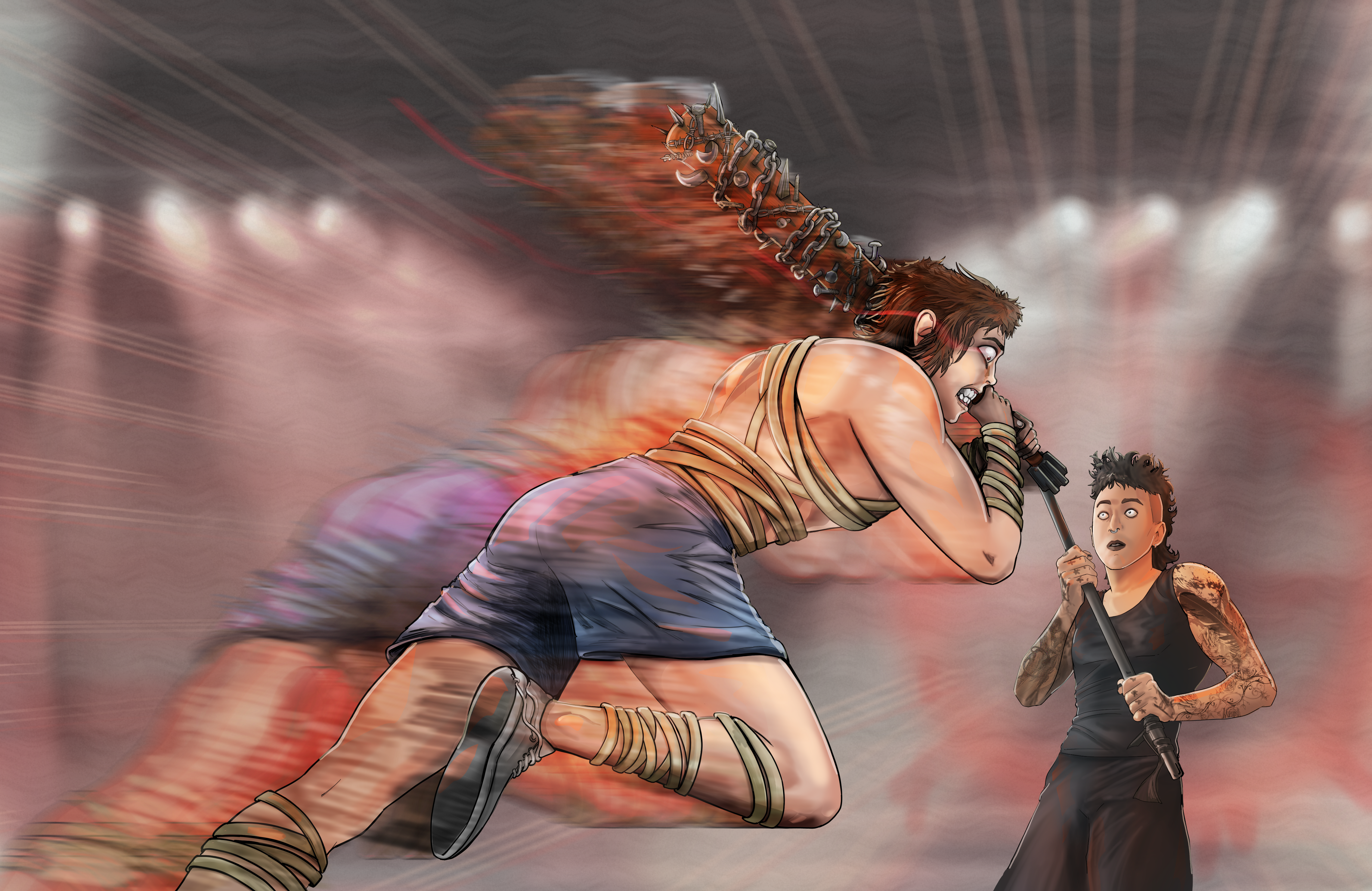
Main Phase:
The Main Phase is the part of your turn where you take the majority of your actions. During your Main Phase, you may:
- Equip 1 Weapon card
- Equip any number of Armor cards
- Play 1 Event Card
- Play any number of Preparation Cards
- Discard a card. If you do, move from Melee to Ranged or vice-versa. If you do, skip your Attack Phase
- Move an equipped One Hand Weapon between your Main Hand and Off Hand, if allowed
Attack Phase:
The Attack Phase always starts with the Weapon equipped in the Main Hand:
- Declare attack
- Choose your target. You can target the Condemned directly, or one of their Armor pieces. If an enemy Condemned has Armor equipped in all three slots or an Armor with Shielding equipped, you MUST target one of those Armor pieces first.
- Your opponent may opt to parry with one of their equipped Weapons. If they do, that Weapon takes the damage instead of the attack’s target.
- If any cards have damage modifiers, apply them now. Then, damage resolves. When you attack the Condemned directly, 1 damage is redirected to each Armor card equipped to the Condemned. For Example, if you have 1 Armor card and are attacked for 3 damage, you would take 2 damage and your armor would take 1. If you had 2 Armor, you take 1 and each armor takes 1.
- Your Weapon takes 1 damage.
- If you have equipped a Main Hand Weapon as well as an Off Hand Weapon, you MUST attack with your Main Hand Weapon first unless you are unable to do so. If, for example, you have a Melee Weapon in your Main Hand, a Ranged Weapon in your Off Hand, and you’re at Range, you may attack with your Ranged Weapon in your Off Hand without using your Main Hand Weapon. But if you’re at Melee, you must attack with the Main Hand Weapon before you can attack with the Off Hand.
- Any Attack after the first attack in the turn deals half damage, rounded up. Apply this during the modifier step.
Damage Modifier Order:
- Effects that sets a specific number (e.g. sets damage to 0)
- Effects that add or subtract damage
- Effects that multiply or divide damage
Desperation Rule:
If you are at Melee, you don’t have any weapons equipped, and you don’t have any Weapon cards in your hand, the Desperation Rule applies. You may make one attack per turn for 1 damage with no type. It cannot be parried, and it must target Armor before you target the enemy Condemned.

Melee and Ranged:
- Melee weapons can only be used when you are at Melee
- Ranged Weapons can be used at Melee and Ranged
These rules apply unless a card effect states otherwise, like Tainted Kunai or the Cattle Prod of Doom.
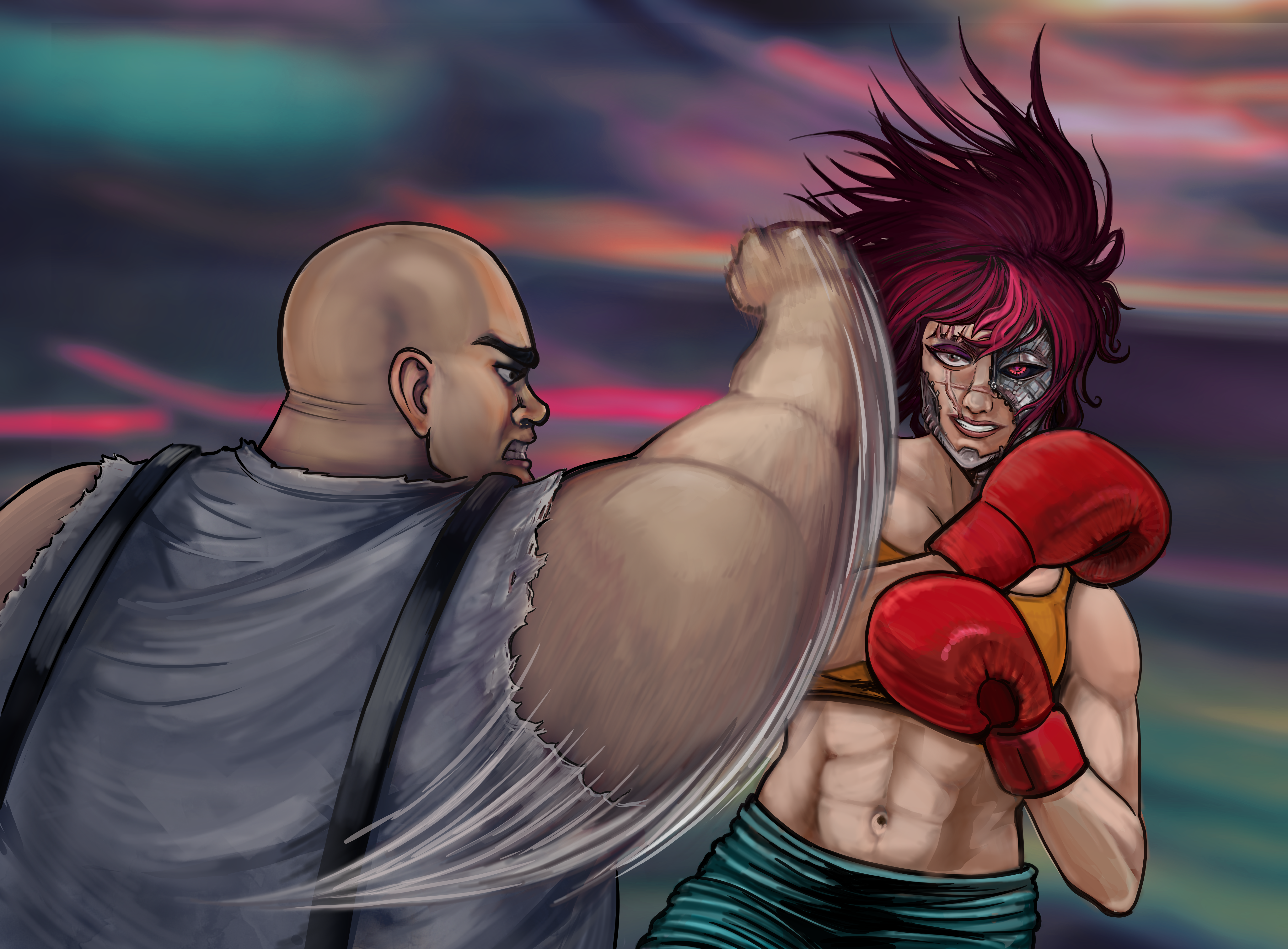
Attrition:
If your deck is empty and you must draw a card, shuffle your discard pile into your deck and then remove the top 5 cards of the deck from the game. Then, continue drawing as normal.
If you have no cards in your deck and cannot draw, play continues without drawing a card. It is a battle to the death, after all! Work with what you got!
